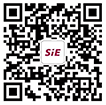On December 18th, the main forum of the 2020 China Enterprise Digital Summit and Saiyi Information User Conference, hosted by Saiyi Information (300687) with the theme of "Scene Driven Digital Intelligent Enterprises", was held in Foshan. This series of conferences has been successfully held since 2014 until its 7th consecutive session, becoming a well-known professional digital event in China. This conference focuses on "scenario" and "digitization" as keywords, and together with over 800 corporate executives, we discuss industry development.
Academician Li Peigen of the Chinese Academy of Engineering, as a guest speaker at this conference, pointed out that digital transformation has become an inevitable trend for enterprises. Digitalization brings new changes and experiences to enterprises in terms of business models, research and development models, manufacturing models, operation models, service models, and decision-making models. He brings everyone's thinking on digital transformation of enterprises from a new perspective of enterprise philosophy, technological trends, innovation directions, and application effects.
At the same time, the conference also invited Dr. Huang Pei, Editor in Chief of EWorks, Vice President Zhu Tao, Financial Management Digital Expert, Huawei Cloud, SAP and other heavyweight guests to share the path and experiences of enterprise digital transformation.
At the opening ceremony of the main forum, Zhang Chengkang, Chairman and CEO of Saiyi Information, clearly proposed the segmentation of scenarioses during the theme sharing. He divided the scenarioses into "small scenarioses", "medium scenarioses", and "big scenarioses" based on specific customer application cases. From the specific application level of the enterprise, based on precise analysis and control of enterprise needs, he "measured" the "scenarioses" and implemented corresponding technologies and solutions, In order to achieve targeted, precise and effective digital transformation for enterprises.
Zhang Chengkang stated that in the era of the Internet of Things and the perception of everything, Saiyi Information enables enterprises to digitize and efficiently land through customized business scenarioses. Accurately identify and understand the pain points and needs of core business scenarioses such as enterprise production and decision-making in small scenarioses, helping them quickly obtain digital transformation opportunities and backend solutions; The medium scenario fully utilizes digital technologies such as 5G and the Internet of Things to conduct business surveys, gain insights and discover future business problems, improve digital marketing plans, improve enterprise operational efficiency and marketing decision-making efficiency, and make business decisions more scientific; The large-scale scenario represented by unmanned factories, through human-machine collaboration in manufacturing processes and the application of new technologies, forms a highly automated mass production based on "human-machine electrical software integration", compressing production costs and reducing personnel dependence.
According to Tianyancha, Saiyi Information was established in 2005, from an ERP implementation and development company to an enterprise information service provider, and now it has entered the Saiyi Information 3.0 era, known as the "Empowerer of Enterprise Digital Transformation". Last year, the company proposed the "One Body, Three Wings" strategy, which centers around creating value for the enterprise, discovers new user scenarioses, applies new digital technologies, integrates new organizational ecology as the three wings, and constructs a "ten thousand types of frost free competition" enterprise digital transformation scene ecological realm.
In the view of Saiyi Information, the customer needs in the era of the Internet of Things will become more contextualized, and digital technology should serve customers' differentiated business scenario experiences. Saiyi Information continuously excavates customer scenario needs, uses digital technology to dynamically construct ecological boundaries that meet their demand graph, and through continuous iteration and upgrading, realizes the common appreciation of ecological boundaries.








